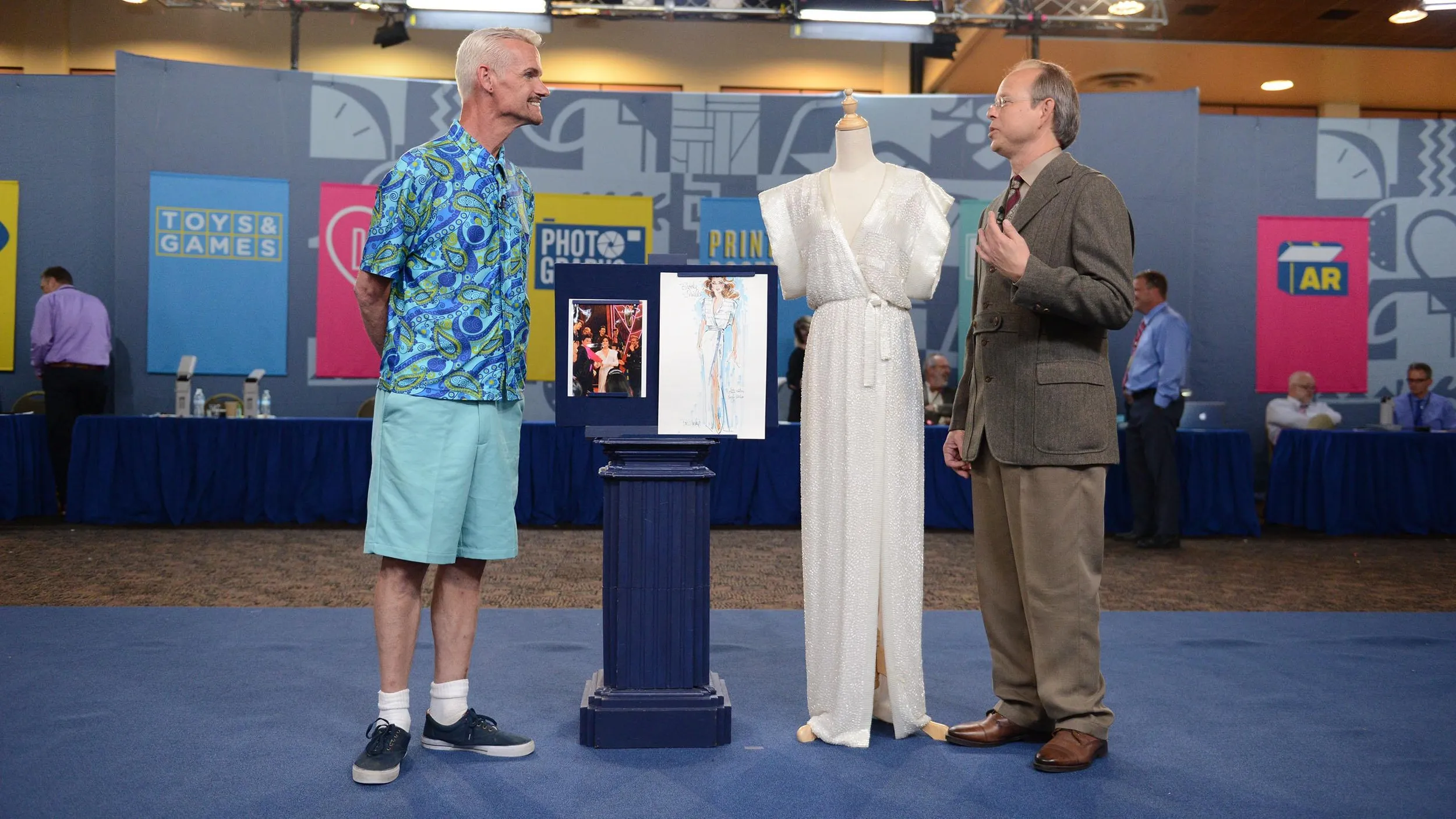GUEST: I got it at an estate sale in the '80s. We don't really know exactly how much we paid for it. Probably between $800 and $1,200, but we got a lot of other stuff as well. I was actually there for the tea cups.
APPRAISER: The tea cups.
GUEST: The tea cups.
APPRAISER: You still have the tea cups?
GUEST: I still have the tea cups.
APPRAISER: Oh gosh, oh gosh. So do you know anything about the ring?
GUEST: I know nothing about the ring, I thought it was a fake.
APPRAISER: Right. So... Let's break the ice right off the bat. It's not fake.
GUEST: Okay.
APPRAISER: It's real.
GUEST: Okay.
APPRAISER: The color's nice, got this deep-- what we call even distribution, this nice saturation. Now, if you notice, the stone is smooth on top. That's what we call cabochon. The reason a lot of these stones are cut cabochon is because emeralds can have a lot of inclusions in them. And what we do is backlight it like that, and you can see it's what we call a garden. There's a lot of things going on inside. But that type of material lends itself better to being cut as a cabochon than if it was faceted. In this case it works wonderfully. Now you have a platinum ring around it, not white gold. But what drew me to the ring design-wise, strong Deco influences. If you notice the two rows coming off of the center, they're square diamonds. But they're square from a very certain period, they're called modified French cuts. We always see them in really in period jewelry. They're hard to find today, they don't cut them anymore. It's not marked, so you wonder, hey, where was this ring made? Usually the European stuff is hallmarked, and quite heavily. So I would say this ring was probably made in the United States. Any thoughts on what your $800 fake ring is worth today?
GUEST: No. No thoughts at all.
APPRAISER: All right, so I think today if you put it into an auction, it would be worth $4,000 to $6,000.
GUEST: Wow. Not bad. Not bad.

